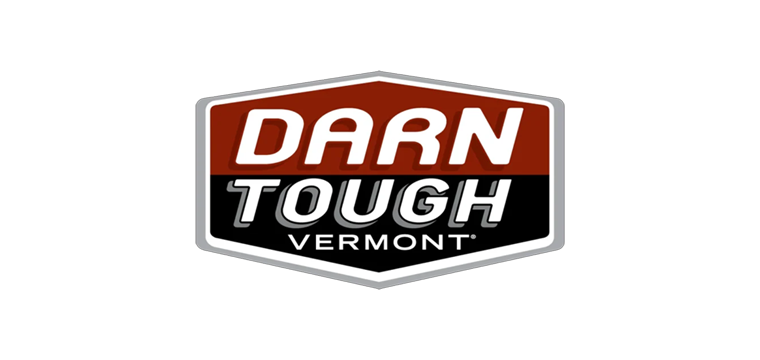Industries
- Manufacturing
- Retail
Endpoints connected
ERP (Apprise), Database (Progress), PLM (Centric Software), WMS (PowerHouse)
Challenges
- The technical integration was manual and needed to be outsourced.
- API integrations relied almost entirely on developers.
Solution
- An iPaaS solution was implemented to take control of the Mud Pie business integration.
- This easy-to-use API integration platform now enables even non-technical business users to complete connections.
Results
- Once the team learned how to use the Jitterbit platform, they accelerated to the finish line. Before Jitterbit, the first interface took six weeks to build, whereas now they are able to complete interfaces in just two weeks.
- Mud Pie expanded skill sets and created a flexible, cross-functional team.
- Using Jitterbit, Mud Pie can now extract essential data and deliver better insights for business users via email, significantly improving business reporting.
Why Jitterbit
- With Jitterbit’s user-friendly interface, the Mud Pie team can jump right in and push out integrations fast.
- Jitterbit allows them the flexibility and control to make changes quickly and easily.
- Jitterbit tools, forums and training platforms empower non-technical Mud Pie employees.
Integration Use Cases
- ERP<>PLM: to include sales information.
- PLM<>ERP: initiate products in ERP.
- ERP<>WMS: needed to go from a manual process to an automated process.
- WDG<>PIM: feed their ecommerce sites with product descriptions, images and pricing information.
Key Success Metrics
- Prior to implementing Jitterbit, Mud Pie outsourced all their development work. Now they no longer outsource work and save money—$200K to date—that went to third-party solutions.
- Mud Pie now has the control and agility that enables them to make changes quickly, saving resources, time and money.
- By implementing Jitterbit, Mud Pie has the agility to stay ahead of trends and shifts in the market.
Mud Pie Sees Savings with Ecommerce iPaaS
Mud Pie creates gifts for life’s little moments. And as a 200-person SMB, it holds its own taking on the heavyweights of online retail, generating $135 million annually with three product lines for kids, women and home. To continue to keep up with the big players the company needed a new business app integration strategy.
As an ecommerce lifestyle brand, Mud Pie concentrates on creating new and innovative products for its three main categories of kids, women and home. But they are not technology experts and had to depend on others for their business-application integrations. Their technical integration was highly manual and almost entirely outsourced to developers.
Mud Pie needed a system that would allow them to complete API integrations without a developer. Therefore, it would make sense to adopt an iPaaS solution that would let them take control of their IT stack. So they researched the Gartner Magic Quadrant report for Enterprise iPaaS solutions and reviewed case studies to learn about platforms.
After reviewing iPaaS platforms like MuleSoft and SnapLogic, they saw some red flags. For example, reviews highlighted that MuleSoft requires a team of Java developers to maintain integrations. And Mud Pie had neither the time nor resources for an internal Java team. In contrast, Jitterbit and its user-friendly interface allows the team to jump right in—even those with limited developer experience—and quickly push out integrations. In addition, Mud Pie felt Jitterbit was much better in terms of how easy the Harmony platform is to learn.
For Mud Pie, what’s most valuable is the training and that the platform enables all skill levels to efficiently work through integrations. These offerings allow Mud Pie to expand skill sets and create a flexible, cross-functional team.
Jitterbit has the tools, forums and training platforms available to those who may not be technically savvy, allowing us to be successful regardless.”
Jason Miller, Information Systems Manager, Mud Pie
The Challenge
At Mud Pie, a small ecommerce retailer/wholesaler, the information systems manager, Jason Miller, needed the ability to easily connect to third-party SaaS apps. He wanted to use an API rest platform to integrate with any website out of the box in order to automate the returns process.
Mud Pie has been outsourcing their integration work to third-party developers and integration support to vendors under traditional SLAs. They were wasting a lot of time and money. For example, if an integration had issues a third-party developer might inform them that it’s custom work, which would result in more costly integration on an interface for which they’d already paid. They needed more direct control over their IT stack versus constantly going through outsiders. Mud Pie needed a solution with more flexibility and control.
As an example, Mud Pie had an existing ERP-PLM integration that functioned adequately and once set up could be maintained by their small staff. But it continued to evolve with follow-on integrations, which required custom code. When the time came to replace the warehouse management system (WMS), the six-month-long SOAP API integration between the ERP and WMS made them realize something had to change.
The Solution
After evaluating iPaaS vendors and selecting Jitterbit, Mud Pie wrapped up the second phase of its ERP-PLM implementation with Jitterbit Harmony. After a month of training, a non-technical business analyst completed the ERP-PLM integration. The team also completed the ERP-WMS integration in less than two months, resulting in virtually no warehouse downtime.
Mud Pie also uses Jitterbit and its DPL functions to integrate their web development group (WDG) to send product and pricing information to a hosted product information management (PIM) system. The PIM is critical for keeping ecommerce sites up to date with the latest product descriptions, images and pricing information. After their marketing and developer teams came to a common understanding on the column specs to match within their databases, the project took less than a week.
Now that we are no longer outsourcing work, we have spent zero third-party dollars on the integration between the ERP and warehouse systems. As a result, the company saved well over six figures by bringing our integrations in-house.”
Jason Miller, Information Systems Manager, Mud Pie
Mud Pie is also working on a business intelligence (BI) implementation and will be using Jitterbit to transfer data from their SQL database to a data warehouse. They plan on using Jitterbit to move and manipulate data to help their BI implementation, which will be the primary source of business reporting.
The Results
With Jitterbit, Mud Pie’s business reporting has improved significantly, extracting essential data that is then emailed to business users. For example, they can now can run a report against their warehouse SQL database for all shipped orders and invoice totals, providing a clear synopsis of what shipped each day, overall and individual shipment values, order classes and which customer orders were fulfilled.
Before Jitterbit, we had to export all the data from an order search, clean it, then run the report, which could take an hour. Now, we automatically generate two reports a day that send them within seconds of completion—that’s huge!”
Jason Miller, Information Systems Manager, Mud Pie
And now with Jitterbit, orders no longer get stuck in the WMS. Powered by Jitterbit, an automated reconciliation program can run queries against their ERP database, parsing the data into a table within the WMS. Orders that were not sent over are flagged, automatically updating their status in the user interface. So there is no more guesswork for reps as to which orders did not transfer to the ERP or why they are missing. With Jitterbit, information is sent and accounted for automatically.
For Jason, Jitterbit was the perfect platform to realize his vision. Mud Pie’s ERP does not have REST APIs built in, so it doesn’t make sense to send flat files that way for the returns process. Instead, they developed an API gateway with Jitterbit using the same logic as the WMS, providing a clean way to send real-time data back and forth between the ERP and WMS.
The Benefits
One of the strategic benefits Mud Pie accrued by implementing Jitterbit is their ability to foresee trends and shifts in the marketplace. This allows them to remain agile and ahead of competitors. And with the addition of factories located around the world on the horizon, they will eventually need a portal where all business information resides. Due to the nature of their ecommerce business, the information repository needs will be extremely large. So much data will need to be captured, including supply costs, style codes, color codes and freight costs. And their current PLM is not up to this task nor the use case of freight cost management, so integration with a supply-chain management portal will be necessary in order for Mud Pie to share data with all their suppliers.
Another benefit is EDI. Mud Pie sells to big-box retailers like Nordstrom, TJ Maxx and others. They want to bypass the legacy EDI method built into their ERP with a next-generation EDI system that would allow them to create a standard API. This would provide the means to share data with those retailers without using costly technical EDI. Ultimately, they want to harness Jitterbit to make information more easy to deal with—saving time and money. And they could make the data available and consumable by partners with two-way communication through a Jitterbit integration.
Using Jitterbit has improved how our existing systems are used and how they interact with everything from databases to endpoint business applications. With Jitterbit integration, the sky’s the limit!”
Jason Miller, Informations Systems Manager, Mud Pie


